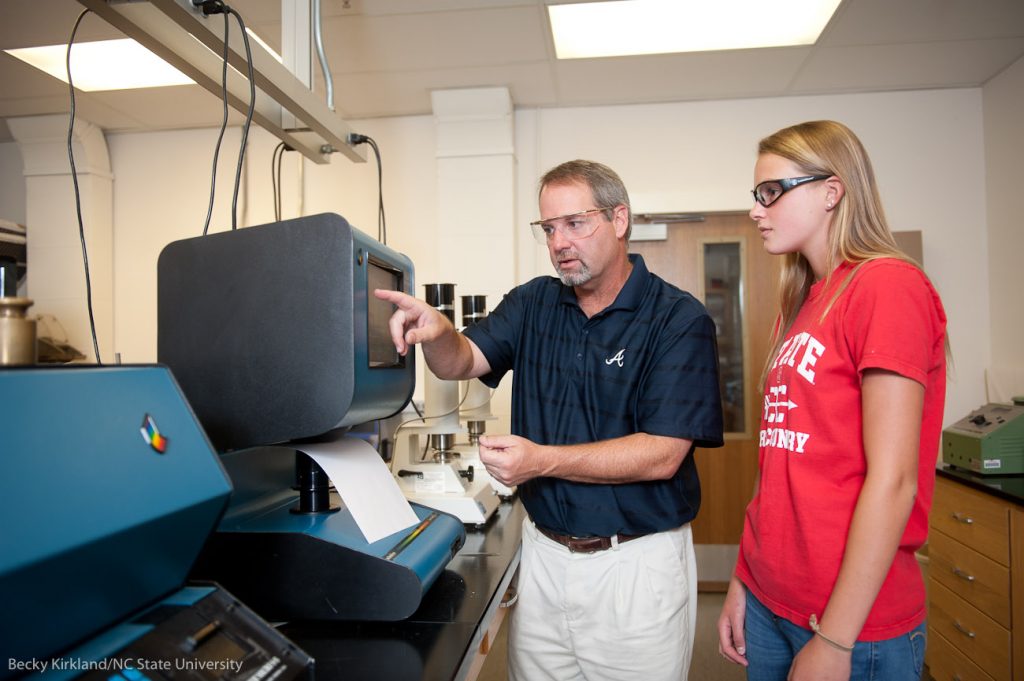Research Programs

New Materials from Biomass
There is greater and greater interest in reducing the dependency of the world on petroleum based industries. It is thus of importance to society to develop new products and fuels from renewable bio-based sources. This is not a trivial task as the reason that petroleum based materials are so prevalent currently is that petroleum based materials are currently inexpensive, widely available and effective. Our research has entailed investigating the use of abundant natural polymers such as cellulose, lignin and starch to produce advanced materials. We are interested in determining the underlying principles that dictate bio-based material behavior. This involves the study of the effects of composition-processing-structure on final material properties.
Life Cycle Analysis and Carbon Footprinting
As the global society moves towards a more carbon constrained climate, business and industry will ultimately have to meet customer needs in a way that generates fewer carbon emissions. Business energy efficiency and low carbon energy supply will play an important role in mitigating global climate modification- a method of implementing economically wise and environmentally significant solutions is by evaluating the “carbon footprint” of products across the supply chain. Indeed, managing the carbon footprint is the next logical step for business and industry to participate in reducing carbon emissions and mitigating climate change. Currently, an established set of guidelines for calculating carbon footprints of products does not exist. The activities in this group are involved in developing models, data and boundary conditions to determine unbiased calculations of the carbon footprint for products and activities.
Paper Recycling
Paper recycling is an important technology in the United States. Over one-half of the approximately 100 million tons of paper consumed in the US is recycled. Important advances are needed to improve the processes in recycling that dictate the quality of the product, the economics of the process and the environmental issues involved in recycling. It is of interest therefore to define the mechanisms that determine the efficiency of conventional paper recycling unit operations and to develop new methods of effective recycling. Our research has included studying the principles behind the following paper recycling related processes: agglomeration deinking, paper recycling with supercritical carbon dioxide, the removal of pressure sensitive adhesive materials with screens, the fractionation of fibers, the detection of depositable contaminants, and the reduction of strength in paper due to recycling.
Green paper: for a method to determine if a paper product is recyclable using standard paper recycling technology, please see the Paper Recycling section listed under Other areas, to the right.
Supercritical Carbon Dioxide as a Green Solvent for Biomaterial Processing
The search for more environmentally sound technologies to replace the extensive use of organic solvents has led to the utilization of supercritical fluids (SCFs), particularly carbon dioxide. CO2 is renewable, non-toxic and non-flammable; hence, it is the most widely used solvent in SCF technologies. Moreover, CO2 attains supercritical (SC) state at relatively lower temperature and pressure (31.1 oC, 7.38 MPa, 72.8 atm), making it more suitable for thermally labile materials. Its early applications include decaffeination of coffee and tea, manufacture of hop products, and extraction of pharmaceuticals and nutraceuticals from agricultural materials [1, 2]. SC CO2has also been shown to be a good environment for dispersion and microemulsion polymerization [3]. In our research we have developed techniques to determine solubility of solutes in CO2 alone and with cosolvents as a function of temperature and pressure. The image shows our solubity view cell; a liquid-gas intephase can be seen in the image. We also have evaluated the extraction of compounds from different substrates with this technology. The use of cosolvents and surfactants to create micelles to solubilize compounds not like to be soluble in CO2 has been evaluated.
Microparticles Generated in Laundering: Generation, Aquatic Biodegradation, and Fate in Water Treatment Plants
The amount of microplastics in the ocean and their effect on marine life has been of great interest [1]. There has been concern recently about the laundering of clothes and the generation of microplastics being released into waste waters and ending up in the ocean and lakes, see Figure [2]. According to the study, microplastics from sediments matched polyester and acrylic fibers used in clothing. Further, they reported that a single garment can produce more than 1900 fibers released in the water per wash. These fibers were counted after filtration on filter paper.
It is the objective of this proposal to define the quantity and characteristics of cotton fibers released during the laundering of garments and to compare the results to other fabrics. Further, this study aims to estimate the fate of these cotton fibers released in laundering during the waste water treatment process (screening, primary water treatment and secondary water treatment) as well as its degradation characteristics in oceans and lakes. A short video of the research can be found here.